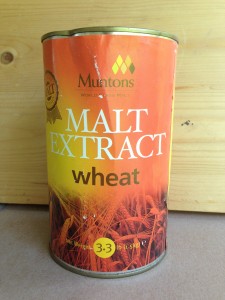As brewers, we often hear about tannins and how they are bad for our beer. But what are tannins? Where do they come from and how do they affect our beer? In this article, I’ll give an overview of tannins and their role in brewing. In a second article, I’ll discuss the nitty-gritty details of how tannins enter the brewing stream, and how to influence the rate at which they do in your home brewery. In a third article, I’ll discuss a little of bit of the chemistry of specific tannins that come from barley malt, hops and oak barrels.
Archives for February 2014
Five More Tips for Extract Brewers
 Previously, I posted an article listing 5 tips for extract brewers. Believe it or not, there are other pieces of advice that may help extract brewers, and here are five more of them.
Previously, I posted an article listing 5 tips for extract brewers. Believe it or not, there are other pieces of advice that may help extract brewers, and here are five more of them.
Podcast Roundup
James and I appeared on an episode of the podcast Gervarpið recently, discussing my Fimbulvinter Øl (winter warmer) and his Fruitcake Barleywine. The show, made by two Icelandic homebrewers, has an Icelandic intro, but the interview is in English.
This reminded me that, back in September (2013), I did a podcast interview for the Final Gravity podcast, discussing brewing big beers.
And of course, James’s podcasts (Basic Brewing Radio and Basic Brewing Video) has featured several episodes with tie-ins to Beer and Wine Journal content (or vice versa), including episodes devoted to the James’ sour mash beer brewed at Fossil Cove, hoppy pale ales, German wheat beers, our IPA experiment results, brewing barleywines and his Fruitcake Barleywine. A full list of recent Basic Brewing Radio shows can be found here. Recent Basic Brewing Viedo shows can be found here. (The related Beer and Wine Journal articles are listed below.)
Cascadian Dark Ale
As I discussed in a previous article, there are some relatively darkish, IPA-like thingys being brewed these days that are fairly popular. Some people call them black IPAs. Other people call them Cascadian dark ales. Still other people think they are two separate kinds of beers — either separate beer styles or substyles — and use both terms. And then of course, there are people who ask, “Why don’t you just call it a porter?”
In a separate article, I described how to brew an IPA-based beer with just enough debittered black malt to turn it dark, but not enough to give the beer a prominent roasted malt flavor. (The roasted flavor could vary from undetectable to faint.) I called those beers black IPAs simply because that’s what a lot of people are calling them. [Read more…]
Black IPA
If you want to brew a beer that tastes like an American-style IPA, but with a darker color, I have two words for you — black malt. Black malt, sometimes called black patent malt, is the darkest of the roasted malts, usually measuring around 500 °L. Given the details of how the maltster vents the kiln during roasting, almost all of the volatile aromatic compounds from this malt are lost. (Take a handful of black malt in one hand and a handful of roasted barley — unmalted bakley roasted to the same color — and smell the difference.) If you want to add color to a beer, but little aroma or flavor, black malt is the way to go.
There are also dehusked black malts available. These dark malts are the same color as black malt, but yield less roasted bitterness. This makes them the ideal choice for a black IPA. Dehusked black malts go by a variety of names. Briess calls theirs Blackprinz malt, Dingemans calls their debittered black malt. Weyermann calls theirs dehusked Carafa III. [Read more…]




Recent Comments